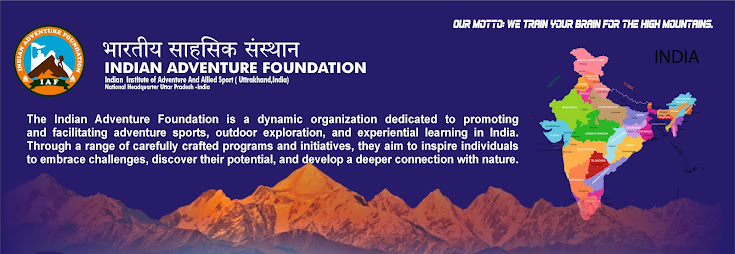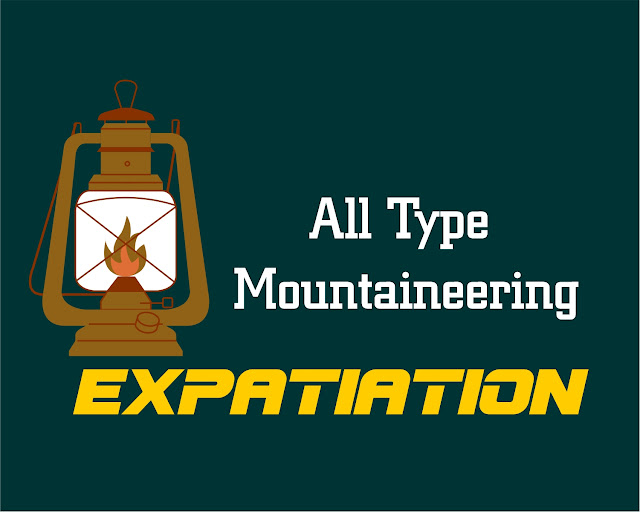Mountaineering expedition
A mountaineering expedition refers to a journey or trip undertaken by individuals or a group of climbers to reach the summit of a mountain or to explore and navigate through challenging mountainous terrain. Mountaineering expeditions are typically characterized by their adventurous nature, physical and technical challenges, and the pursuit of reaching high altitudes.
Here are some key elements of a mountaineering expedition:
Objective: The primary goal of a mountaineering expedition is to reach the summit of a specific mountain peak. The peak could be a famous mountain, a lesser-known peak, or even a previously unclimbed one.
Preparation: Extensive planning and preparation are required for a successful mountaineering expedition. This includes selecting the appropriate mountain, route, and timing; assembling a skilled and experienced team; acquiring necessary permits; arranging transportation; and gathering equipment.
Physical and Technical Challenges: Mountaineering involves physically demanding activities such as hiking, climbing, rappelling, ice and rock climbing, and dealing with altitude-related challenges. Climbers need to be in good physical condition and possess technical skills relevant to the terrain and conditions.
Altitude Acclimatization: As climbers ascend to higher altitudes, the air becomes thinner, and oxygen levels decrease. Acclimatization involves gradually ascending to higher altitudes to allow the body to adjust to the lower oxygen levels, reducing the risk of altitude sickness.
Equipment: Mountaineers require specialized equipment such as ropes, harnesses, helmets, ice axes, crampons, tents, sleeping bags, and cooking gear. The equipment varies depending on the specific mountain and the challenges it presents.
Safety Measures: Safety is a paramount concern in mountaineering expeditions. Climbers need to be equipped with proper safety gear and follow established safety protocols. This includes using ropes, helmets, and protective clothing, as well as practicing proper rope techniques and avalanche awareness.
Teamwork and Communication: Mountaineering is often a team effort. Effective teamwork and communication are crucial for ensuring the safety and success of the expedition. Team members rely on each other for support, assistance, and decision-making.
Environmental Considerations: Mountaineers must adhere to principles of environmental conservation and "Leave No Trace" ethics to minimize their impact on the fragile mountain ecosystems.
Weather and Conditions: Mountain weather can be unpredictable and harsh, with rapid changes in conditions. Climbers need to be prepared for varying weather patterns and potential storms.
Sense of Accomplishment: Reaching the summit of a mountain is a significant achievement and a source of personal satisfaction for mountaineers. However, turning back before the summit, if conditions are unsafe or unforeseen challenges arise, is also an important part of responsible mountaineering.
Mountaineering expeditions offer individuals the opportunity to challenge themselves physically and mentally, experience breathtaking landscapes, and build strong bonds with their teammates. However, due to the inherent risks involved, mountaineers must prioritize safety and proper training to ensure a successful and enjoyable expedition.
"Mount training" typically refers to training or preparation for activities related to mountains, such as mountaineering, hiking, rock climbing, and other outdoor pursuits in mountainous terrain. This kind of training is important because mountain environments can be physically demanding, challenging, and even hazardous due to factors like altitude, weather conditions, and technical terrain.
Mount training can involve a combination of physical, mental, and technical preparation. Here are some key aspects often included in mount training:
Physical Conditioning: Mountain activities can require a high level of fitness, including cardiovascular endurance, strength, and flexibility. Training might include aerobic exercises (running, cycling), strength training (weightlifting, bodyweight exercises), and activities that simulate the demands of mountain terrain, such as stair climbing or hill training.
Altitude Acclimatization: For high-altitude mountain expeditions, acclimatization is crucial. Training might involve gradually ascending to higher altitudes to allow the body to adapt to lower oxygen levels. This helps reduce the risk of altitude-related illnesses.
Technical Skills: Depending on the specific activity, you might need technical skills such as rope work, ice climbing, crevasse rescue, navigation, and using specialized equipment like crampons and ice axes.
Endurance Training: Long hikes and climbs demand endurance. Training could involve extended sessions of cardio exercises, progressively increasing the duration and intensity.
Mental Preparation: Mountain activities can be mentally challenging due to unpredictable weather, exposure, and the need to make quick decisions. Mental training might involve practicing mindfulness, stress management, and decision-making under pressure.
Gear Familiarization: Learning about and becoming proficient with the gear specific to mountain activities is important. This might include understanding how to properly use climbing harnesses, helmets, ropes, and other technical equipment.
Nutrition and Hydration: Proper nutrition and hydration are essential for sustained physical performance at high altitudes. Training might involve learning about the right foods to consume and how to manage nutrition during the activity.
Safety and First Aid: Understanding basic first aid, emergency procedures, and how to deal with common mountain-related injuries is crucial. Training might include wilderness first aid courses.
Conservation and Leave No Trace: Training might also include lessons on responsible outdoor practices, environmental conservation, and leaving minimal impact on the natural environment.
Progressive Training: Start with activities suitable for your current fitness level and gradually progress to more challenging terrain and conditions. Working with experienced mentors or guides can provide valuable guidance.
Remember that the specific training plan will depend on the type of mountain activity you're interested in pursuing and your current fitness level. It's always a good idea to seek advice from experienced mountaineers, outdoor organizations, or professional trainers to tailor your training plan to your goals and needs.




Comments
Post a Comment